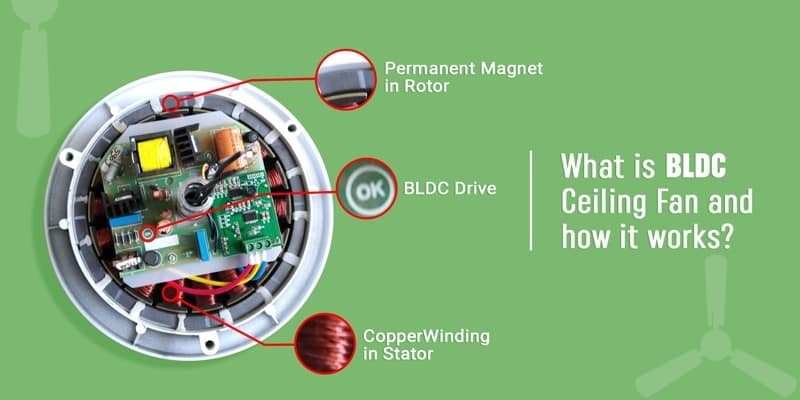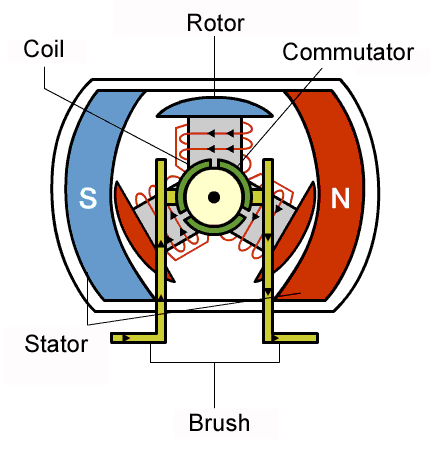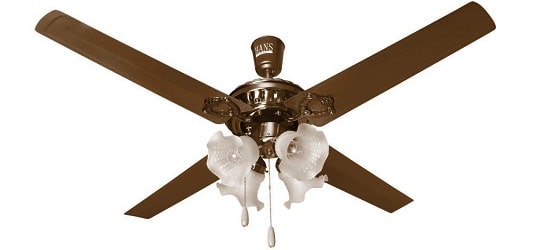Since LED bulbs consume significantly less electricity than incandescent bulbs, there was a remarkable shift away from incandescent bulbs a few years ago. It was more of a revolution than another technological improvement because it allowed for the same amount of lumens to be produced with reduced power consumption. Ceiling fans are on the verge of making the same change. BLDC Fan is among the industry’s most innovative and forward-thinking companies. All of the old & inefficient induction generator fans will be replaced by effective BLDC fans in a couple of years.
What are BLDC Ceiling Fans?
The fans that use BLDC motors in place of ordinary induction motors are referred to as BLDC fans (brushless direct current). When compared to conventional induction motors, BLDC motors have the potential to lower power usage by up to 65 percent.
The lifespan of a BLDC fan is also greater than that of a conventional ceiling fan since there is no flow of heat by the BLDC motor; as a result, the bearings in the ceiling fan can last longer. Furthermore, due to the great width of the copper cable used in the winding, there are relatively few changes of the winding failing.
Structure of BLDC Fans
The following components make up the BLDC fan’s structure:
All motors are made up of three parts:
- Stator – The immobile object is referred to as a stator.
- Rotor – A rotating object is referred to as a rotor.
- Shaft – The tube that connects a motor to its associated application.
A brushless d.c motor is a motor that is driven by a direct current electric source (typically, alternating current). An electric motor turns electric power into rotary (mechanical) energy using a series of gears.
An example of a ceiling fan that consumes less electricity than a standard induction fan is the BLDC ceiling fan. It is sometimes referred to as an energy-saving fan or a brushless direct current fan. Brushless direct current is the full form of the term bldc.
About BLDC motors and their usefulness
The brushless DC motor (BLDC) is a motor that is powered by a direct current electric source. To generate an electronic current to operate the motor, it makes use of an inbuilt inverter power supply.
There are 2 types of motors: brushed motors and brushless motors. Brushed motors are the more common type. In contrast to the Brushless Motor, which has been in use for more than a century, the Brush Motor is a more modern development.
The following are some of the advantages that the Brushless dc motors have over the regular Brushed motor.
- Longer lifespan
- Noise reduction
- Enhanced reliability
- More torque in terms of watt
- High torque in terms of weight ratio
The coils in this motor are supported by the housing. It explains why conduction may be used to cool the motor when it is hot. Because it does not need any external airflow for internal cooling, the motor parts are completely protected from dirt or other foreign matter. These brushless DC motors are used in place of the traditional motors in today’s Super-Efficient fans.
Working principle of BLDC Fans
To this end, switched-mode power supplies (SMPS) are used to power BLDC fan drives. The microcontroller then receives the remotely controlled signal and matches it to the input signal that is passed through it, and after that, the inverter runs the motor.
How does the BLDC Ceiling Fan work?
The primary motivation for employing BLDC is to save energy.
There will be no brushes in the space between the rotor and the stator. Brushes, on the other hand, will be present between the stator and the rotor in a Brushed DC Motor. In this way, a lot of energy was wasted.
That’s why you might notice anything like this: when you operate the fan for a lengthy period and then turn it off, the fan may become hot to the touch. This is because brushes are used.
The absence of brushes in BLDC motors means that they generate less heat, extending the life of the fans and saving money on energy costs in the process.
The BLDC circuit is installed above the smart fan. The essential components of the BLDC drive are the SMPS, Microcontroller, Inverter, and Motor.
SMPS is a device that assists in converting alternating current to direct current. Remote inputs from the end-user are received by the microcontroller, which is the primary component that assists in this process. Inverter- It is controlled by the inputs from the remote.
Simply put, when we turn on the fan, the SMPS will convert the alternating current to a direct current, after which the microcontroller will get an incoming signal from the control and send it to the inverter, after which the fan will begin to rotate.
As a result, the BLDC technology is now being used in fans that are Internet of Things-enabled, and the key advantage is that we can control them using a remote as well as our Android smart phones.
The primary benefit of these BLDC fans is saving power. One can save electricity around 60% as compared to the old fans.
Brushless DC motor applications
A wide range of application requirements, like varying loads, continual loads, and positioning applications, are met by brushless DC motors (BLDCs), which are used in a variety of fields such as industrial control, automobiles, airplanes, automation systems, and health care equipment, among others.
- Computer hard drives & DVD/CD players
- Electric automobiles, hybrid vehicles, & electric bicycles
- Robotic systems, CNC machine parts, and simple belt-driven systems are all examples of automated systems.
- Washing machines, compressor, and dryers
- Blowers, pumps, and Fans
Conclusion
When compared to induction fans, BLDC fans have numerous advantages, including lower electricity consumption, quieter operation, and a longer service life.
These fans, which are powered by trustworthy motors, are capable of running smoothly and silently in their operation. The 310 RPM fans, that deliver 240 CMM air force at 310 RPM, are the highest air delivery fans available in the Indian market.
BLDC Ceiling Fans FAQs
Q. Are BLDC ceiling fans more expensive than traditional fans?
Ans: Initially, BLDC fans may be more expensive, but they can save you money in the long run due to their energy efficiency. The lower electricity bills can offset the higher upfront cost.
Q. Can BLDC ceiling fans be connected to smart home systems?
Ans: Yes, many BLDC ceiling fans are compatible with smart home systems like Alexa, Google Assistant, and others. This allows you to control them using voice commands or smartphone apps.
Q. Do BLDC ceiling fans require special installation?
Ans: Installing a BLDC fan is similar to installing a traditional ceiling fan. However, it’s essential to follow the manufacturer’s instructions carefully to ensure proper installation and operation.
Q. Do BLDC ceiling fans come with warranties?
Ans: Most BLDC ceiling fans come with warranties that typically cover the motor and other components. The length and terms of the warranty may vary between manufacturers, so it’s a good idea to check before purchasing.
Q. Can I use a BLDC ceiling fan with a generator or inverter during power outages?
Ans: BLDC fans can be used with compatible inverters or generators, but it’s essential to ensure that the inverter or generator can provide sufficient power to operate the fan.
Q. Are BLDC ceiling fans suitable for all climates?
Ans: Yes, BLDC ceiling fans are suitable for various climates. They can help distribute air evenly in both hot and cold weather conditions, making them versatile and suitable for use year-round.
Q. How do I clean and maintain a BLDC ceiling fan?
Ans: Regularly clean the blades and housing of your BLDC fan to prevent dust buildup, which can affect its performance. Additionally, lubricate the motor as recommended by the manufacturer to ensure smooth operation.

Santosh Kumar is an editor at unfoldstuffs.com and a professional content writer. With years of experience he is passionate for creating engaging, informative and impactful topics.











